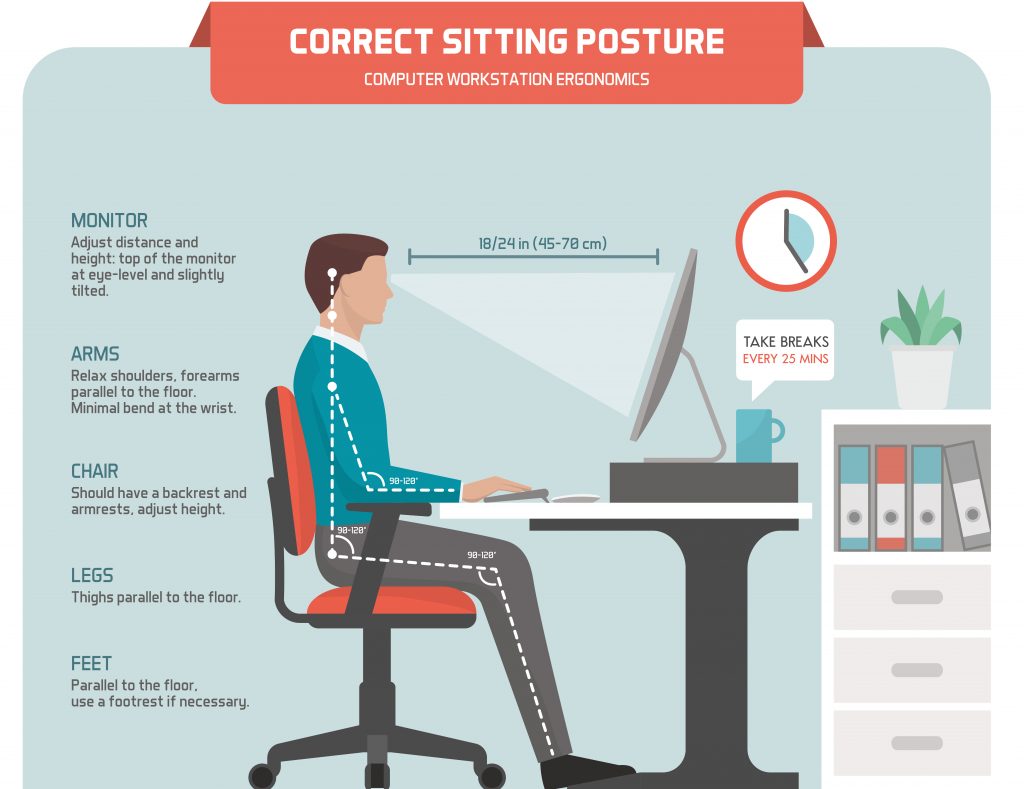Office Computer Desk Ergonomics: Reducing the Risk of Injury
In today’s fast-paced digital world, most of us spend a significant portion of our day working on a computer at our office desk. However, prolonged hours in front of a screen can lead to various health issues, such as neck strain, back pain, and wrist discomfort. Thankfully, by setting up your office computer desk with proper ergonomics in mind, you can reduce the risk of injury and promote a healthier and more productive workspace. In this article, we’ll guide you through the essential steps to achieve an ergonomic setup, ensuring optimal comfort and well-being.

Image by Meredith Chandler – How To Create The Ideal Ergonomic Workstation Setup
1. Choose the Right Desk and Chair
The foundation of a comfortable and ergonomic office setup begins with selecting the right desk and chair. Invest in a desk that offers enough surface area to accommodate your computer, monitor(s), keyboard, and other necessary peripherals. Adjustable height desks are preferable as they allow you to alternate between sitting and standing, promoting better posture and blood circulation.
Equally important is a high-quality ergonomic chair that supports your lower back and encourages a natural curve in your spine. Look for chairs with adjustable height and armrests to find the perfect fit for your body.
2. Position Your Monitor at Eye Level
Proper monitor placement is critical to avoid straining your neck and eyes. Position the top of your monitor screen at or just below eye level, so you’re looking slightly downward. This reduces the risk of neck strain and minimizes eye fatigue.
Ensure the monitor is at a comfortable distance from your eyes – typically about an arm’s length away. If using multiple monitors, align them side by side and at an equal height to prevent constant head movement.
3. Create an Optimal Keyboard and Mouse Setup
An ergonomic keyboard and mouse setup can significantly reduce the risk of repetitive strain injuries. Position your keyboard at a height that allows your elbows to rest comfortably at your sides and form a 90-degree angle.
Keep your wrists straight and avoid bending them upward while typing. Consider using a keyboard tray or a split ergonomic keyboard to maintain a natural wrist position. Similarly, choose an ergonomic mouse that fits the shape of your hand, reducing strain during extended periods of use.
4. Mind Your Posture
Maintaining a proper posture while working at your computer is essential for preventing back pain and musculoskeletal issues. Sit with your back against the chair, and ensure your feet are flat on the ground or a footrest.
Keep your knees bent at a 90-degree angle, and avoid crossing your legs for extended periods. Engage your core muscles to support your spine and shift positions regularly to prevent stiffness.
5. Organize Your Desk Thoughtfully
An organized desk not only enhances productivity but also contributes to an ergonomic setup. Keep frequently used items, such as pens, notepads, and phone, within arm’s reach to avoid excessive stretching and straining.
Use cable management solutions to keep cords and cables tidy and prevent tripping hazards. Clutter-free surroundings promote a calmer work environment and a clear mind.
Things to Remember
By implementing these simple yet effective ergonomic principles, you can transform your office computer desk into a space that fosters comfort, productivity, and overall well-being. Investing in a suitable desk and chair, positioning your monitor correctly, and prioritizing a proper keyboard and mouse setup will go a long way in reducing the risk of injury associated with prolonged computer use.
Remember to maintain good posture and take regular breaks to stretch and relax your muscles. Creating an ergonomic office computer desk setup isn’t just about productivity – it’s an investment in your long-term health and happiness.
